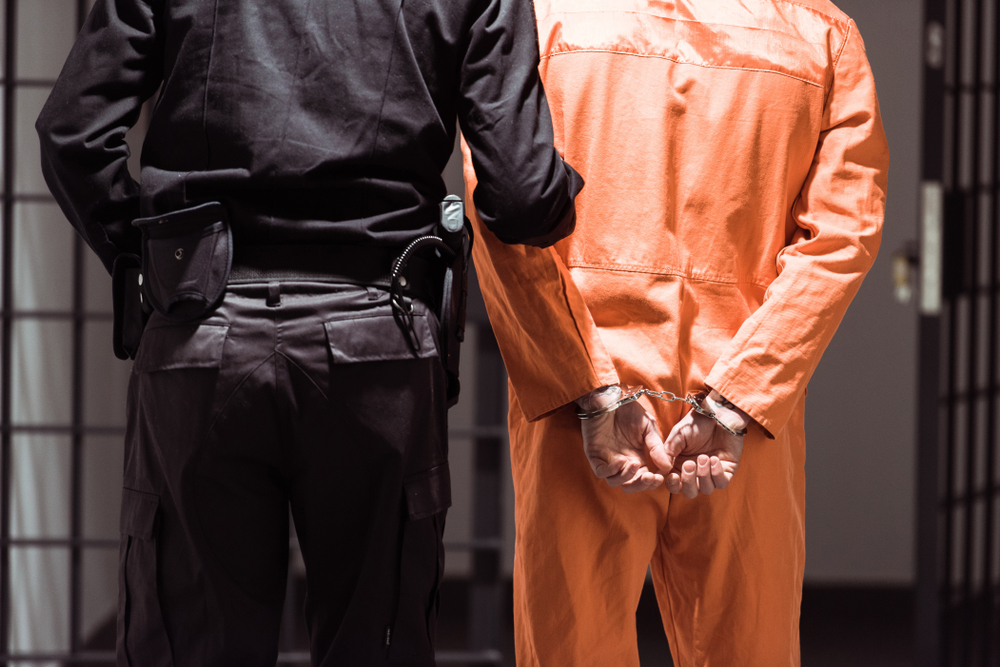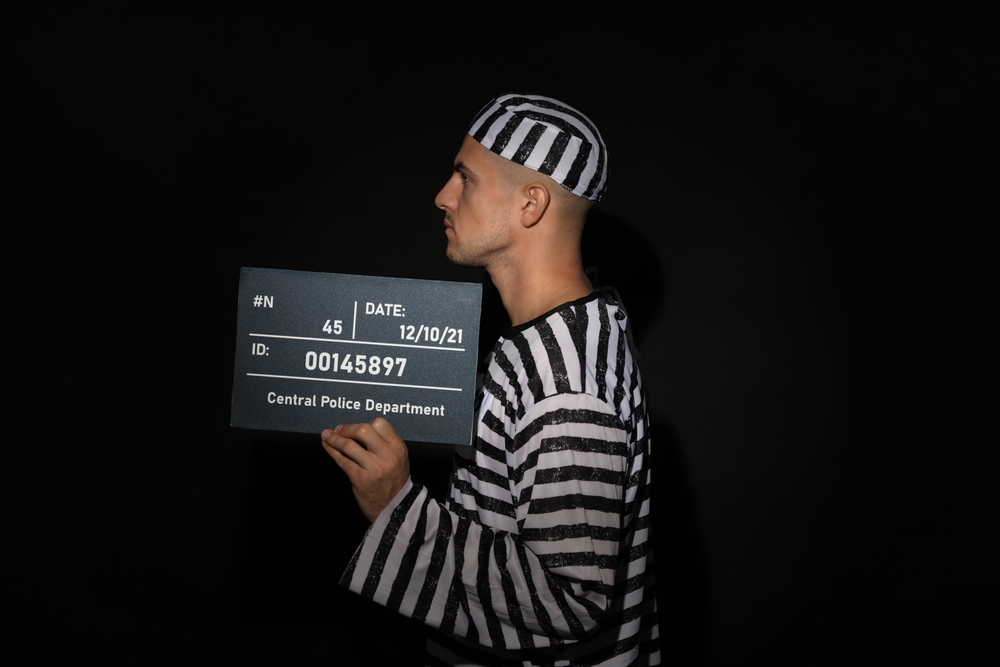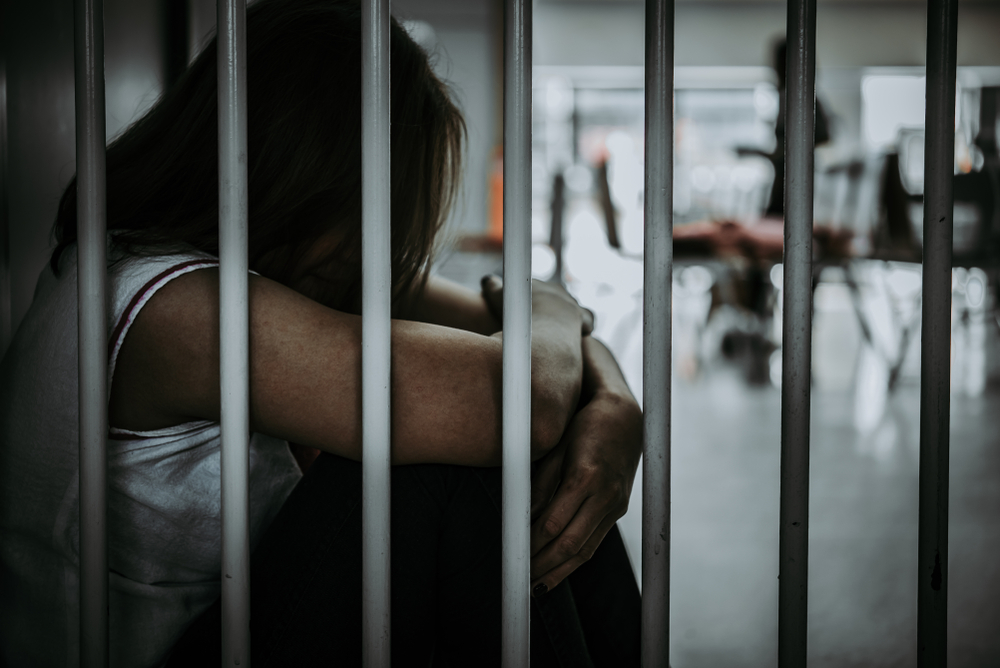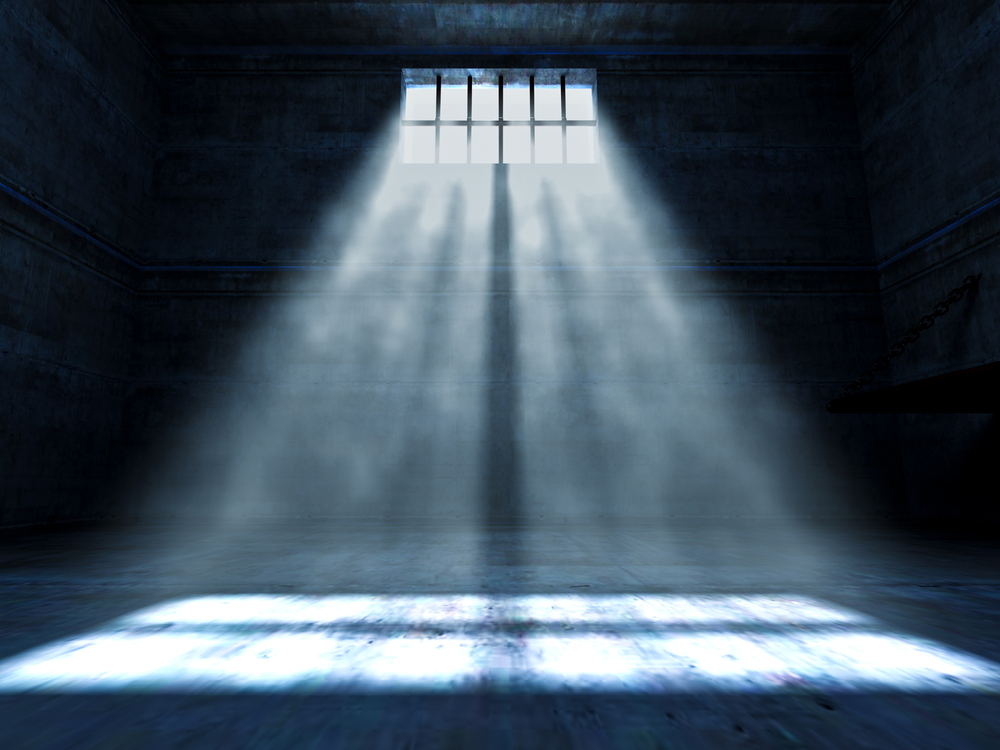Orange Uniform Vs White Black and Blue Jail
With the popularization of the TV series, Orange Is the New Black, many people have wondered why prisoners wear orange.
Ultimately, the answer to the question boils down to an uncomfortably generic "because."
The actual color does not matter. What is important is that prisoners' uniforms have to be distinct, since wearing an exclusive and distinctive uniform makes it more difficult for prisoners to escape successfully.
Table of Contents
- Prisoners didn't always wear uniforms
- Why prisoners ended up in uniforms
- Prisoners didn't always wear orange uniforms
- Prisoners still don't always wear orange uniforms
- There are reasons why we normally see prisoners in orange uniforms
- There's a reason why authorities want prisoners in distinctive uniforms
- The meaning of different colors on prisoners' uniforms
- Red uniforms
- Grey uniforms
- Striped uniforms
- Why did striped uniforms disappear?
- The first appearance of the orange jumpsuit
- The evolution of prisoners' uniforms and how it's going full circle
- Prisoners are starting to wear their own clothes again
- The return of striped uniforms
- A timeline of prisoners' uniforms for men
- The 18th and 19th centuries
- The early 20th century
- Timeline of prison uniforms for women
- The early 1900s
- The 1950s–1990s
- Modern times
- Facts about prison uniforms
Prisoners didn't always wear uniforms
In the early days of detention, prisoners did not wear uniforms. They simply wore whatever clothing they had.
It was not until the 19th century that uniforms became standard.
Male convicts were uniformed and frequently worked in chain gangs, especially in the South. This was when the white and black stripes became the norm in a prison uniform – it symbolized prison bars.
Why prisoners ended up in uniforms

Now, in the 21st century, prisoners of both sexes wear uniforms.
Uniforms help distinguish the inmates from the staff and can also be used to differentiate between the different custody levels.
For example, in California, the orange jumpsuits are commonly worn by inmates who aren't yet classified.
The uniforms for prison are also made to:
- Reduce the risk of a prisoner concealing an object. For example, uniforms could be designed with no pockets on the pants to restrict the areas where the prisoner can conceal their belongings.
- Uniforms make it difficult to escape (as prisoners can be easily identified). This is why many institutions issue prisoners uniforms that are easy to spot if they are being transferred.
Prisoners didn't always wear orange uniforms
In the past, more somber colors were popular. In the 18th century, prisoners typically had black-and-white stripes.
However, this style was abandoned due to its association with chain gangs and new styles were adopted in the 20th century.
In 1904, New York state eliminated prison stripes before changing over to gray-colored jackets and caps. North Carolina kept the stripes until 1958, which was the year they substituted them with the color scheme based on levels of custody.
For example, gray uniforms were for high-security prisoners, brown uniforms were for medium-security prisoners, and green uniforms were for lower-level prisoners.
It was only in the 1970s that jails began to put some prisoners in orange uniforms. However, this was generally only in specific detention conditions (like in temporary facilities) or when they were in the process of being transported.
In California, for example, prisoners are required to wear red or orange while they're being transported.
Prisoners still don't always wear orange uniforms

While orange might be more popular than in earlier times, it's not the most popular color. Some California prisons have their male prisoners dressed in denim jackets, blue chambray shirts, and jeans.
The Federal maximum-security prison located in Florence, Colo., offers khaki shirts and trousers.
The color orange is actually banned (!) in New York state prisons. The uniforms issued by this state are hunter green, but New York state also permits prisoners to wear their personal T-shirts under the following conditions:
- T-shirts can't be colored blue (since blue is the color of uniforms for prison guards).
- T-shirts can't be black (too difficult to discern).
- T-shirts can't be gray (other officials also wear gray).
- T-shirts can't be orange (the color worn by Riot Control Team personnel and Correctional Emergency Response Team members).
There are reasons why we normally see prisoners in orange uniforms
Orange may seem more ubiquitous as a result of the fact that prisoners usually change their clothes to orange before going outside in the open. Sheriffs often dress prisoners in orange when they go on perp walks before journalists.
In contrast, prisoners frequently wear orange when they are in the courtroom. Films like Con Air, in which a group of prisoners dressed in orange take over the plane, have also contributed to the notion that orange is now the new black-and-white.
Finally, of course, there's also "Gitmo." Images of Guantanamo prisoners in orange have attracted lots of attention recently. However, officials from the government say that most prisoners in Guantanamo Bay wear white.

Some prisons are fond of choosing distinct uniforms. Cleveland County has prisoners wearing yellow-and-white striped pants and pink shirts, which officials of the sheriff's office say makes it harder for prisoners to escape.
Arizona's Maricopa County's Sheriff Joseph Arpaio has at different times ordered prisoners to dress in pink underwear, orange jumpsuits, and traditional stripes.
Different colors of clothing are used to denote and humiliate the prisoners in jails all over America. However, those in minimal-security prisons wear wristbands colored blue, red, orange, yellow, or white, depending on their behavior.
The meaning of different colors on prisoners' uniforms
Red uniforms
Red is a popular color for the most prominent inmates, such as famous people and celebrities. Red is also worn by high-security prisoners such as drug lords and terrorists.
A prisoner dressed in red is generally considered a high-risk individual.
Grey uniforms
This color is sometimes used on prisoners incarcerated on charges of child molestation. It is also used for sex offenders, people with mental disorders, and prisoners who are too fragile to make it in the normal populace.
Striped uniforms

Urban legend has it that prisoners were made to wear horizontal white and black stripes to make them feel that they couldn't escape from prison. Apparently, the thinking was that their horizontal bars symbolized the vertical bars of a prison and the idea of "no."
Dark red striped uniforms were for the fiercest and most dangerous prisoners. Yellow striped uniforms were for low-risk prisoners.
Why did striped uniforms disappear?
In the early 20th century, striped prison uniforms were removed in the US because using them was seen as a means of humiliation and a "badge of shame," and was no longer regarded as being appropriate or helpful.
However, certain institutions kept them for longer. It was not until 1958 that North Carolina got rid of stripes.
Most prisons and jails changed to gray-colored cloth or other colors that were subdued during the early 20th century, with more vibrant colors becoming more popular as the years progressed.
The first appearance of the orange jumpsuit
In the late 1990s, prisons began to put prisoners in jumpsuits with orange stripes for certain situations, usually in temporary prisons or while they were being transported.
But these jumpsuits aren't worn often in many prisons. People tend to associate orange with prisoners because prisoners wear orange for additional visibility outside the jail.
The evolution of prisoners' uniforms and how it's going full circle
Prisoners are starting to wear their own clothes again

Like early prisons, some institutions permit inmates to dress in their own street clothes or select between different colors or choices (though with some restrictions).
In light of the popularity of the Netflix series Orange Is the New Black, orange jumpsuits have been banned in many prisons because they became too popular with prisoners.
The return of striped uniforms
In a sign that trends go in cycles, in 2000, The New York Times stated that certain prisoners and prisons were going back to stripes. One reason was that color-coordinated jumpsuits were popular among prisoners, and they didn't seem harsh enough.
Michigan jails also brought back black and white stripes in 2014.
A timeline of prisoners' uniforms for men
The 18th and 19th centuries
In the early 1700s, it was not uncommon for prisoners across the globe to not have uniforms. Instead, prisoners could dress in their own clothes or pick from rags available. It was only in the 19th and 18th centuries that uniforms became common.
The first use of the stereotypical black-and-white-striped jumpsuit uniform was in the 19th century in the U.S. The pattern was introduced as a mark of shame to degrade offenders, particularly when the prisoners worked in chain gangs.
Such uniforms were believed to promote discipline in the hopes that this external discipline would facilitate internal self-control and rehabilitation.
The early 20th century
Intentions to ease future rehabilitation of inmates and treat them with more respect meant that uniforms were less noticeable. Denim-colored jumpsuits and solid-colored jumpsuits were regular uniforms by the beginning of 1900.
The clothes let prisoners work in more comfortable surroundings. By 1950, offenders typically wore jeans and a simple shirt.
Like the jumpsuits of the early 1900s, the uniforms of those days were suitable to work in yet comfortable enough to wear on other occasions.
Timeline of prison uniforms for women

The early 1900s
At the beginning of 1900, several institutions did not have uniform guidelines for women. For instance, in the California Institution for Women, inmates could select from a wide range of colors, fabrics, and patterns.
The idea was that female criminals were the moral lapses of women. Therefore, prisoners were encouraged to change their appearance to be more feminine.
The 1950s–1990s
In the late 20th century, women's prisons across the United States had begun to change their clothing to more formal ones. In the 1990s, most institutions for women issued standardized uniforms.
With a greater understanding of psychology and efforts to increase women's equality and gender diversity, the notion that women were guilty of crimes solely because they weren't sufficiently feminine was dismissed.
Modern times
Nowadays, it's commonplace for women to wear standard uniforms. They're nearly the same as the uniforms worn by males and eliminate any notion of distinction.
Facts about prison uniforms

- The idea of uniforms for prisons was actually introduced in the general reform movement that took place in the 18th and 19th centuries. Before that, jails and prisons were chaotic and lacked organization or even designated sleeping areas.
- Early on, people thought prisons were places of transformation and spiritual growth, and prison authorities were required to ensure that prisoners were disciplined. The way the prisoners dressed was more of a psychological problem than a practical one. The thought was that external discipline would lead to an internal discipline that could change the convict's character.
- In 1775, the Duke of Richmond erected the all-new Sussex prison. When inmates entered, they were washed, shaved, covered in a uniform, and placed on beds with blankets. The result was uniformity and equality. No longer were rich prisoners being treated differently than the less wealthy.
- The Victorians maintained this pattern and regulated even the smallest things in their obsession with control. Inmates were provided with clothing and numbers instead of names. (Today, prisoners are given numbers, but they aren't addressed by them.)
Source: https://journeyz.co/why-do-prisoners-wear-orange-uniforms/